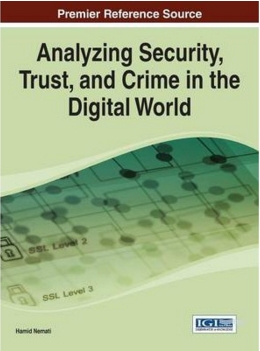
Analyzing Security, Trust, and Crime in the Digital World
[Book Description]
In the digital era, information is the most valuable resource, and protecting one's assets is a constant struggle for both individuals and organsations. Analyzing Security, Trust, and Crime in the Digital World explores techniques and technologies used to secure data and prevent intrusion in virtual environments. Within these pages, computer scientists, programmers, engineers, and practitioners will find meaningful research on intrusion detection and authentication techniques in order to further defend their own systems and protect the information therein.
[Table of Contents]
Preface xii
Chapter 1 A General Framework of 1 (21)
Algorithm-Based Fault Tolerance Technique
for Computing Systems
Hodjatollah Hamidi
Chapter 2 Methods on Determining the 22 (13)
Investment in IT Security
Amanda Eisenga
Walter Rodriguez
Travis Jones
Chapter 3 Critical Path Stability Region: A 35 (26)
Single-Time Estimate Approach
Hossein Arsham
Veena Adlakha
Chapter 4 Authenticity in Online Knowledge 61 (16)
Sharing: Experiences from Networks of
Competence Meetings
Inge Hermanrud
Chapter 5 Information Privacy Concerns and 77 (19)
Workplace Surveillance: A Case of Differing
Perspectives
Regina Connolly
Chapter 6 Wearable Computing: Security 96 (25)
Challenges, BYOD, Privacy, and Legal Aspects
John Lindstrom
Claas Hanken
Chapter 7 Control Mechanism of Identity 121(41)
Theft and Its Integrative Impact on
Consumers' Purchase Intention in E-Commerce
Mahmud A. Shareef
Vinod Kumar
Uma Kumar
Chapter 8 The Influence of Trust in the 162(25)
UTAUT Model
Eduardo Esteva-Armida
Chapter 9 Technology-Related Risks in 187(21)
Virtual and Traditional Information Systems
Projects
April Reed
Chapter 10 A Likelihood Ratio-Based 208(17)
Forensic Text Comparison in SMS Messages: A
Fused System with Lexical Features and
N-Grams
Shunichi Ishihara
Related References 225(28)
Compilation of References 253(23)
About the Contributors 276(4)
Index 280

 新书报道
新书报道